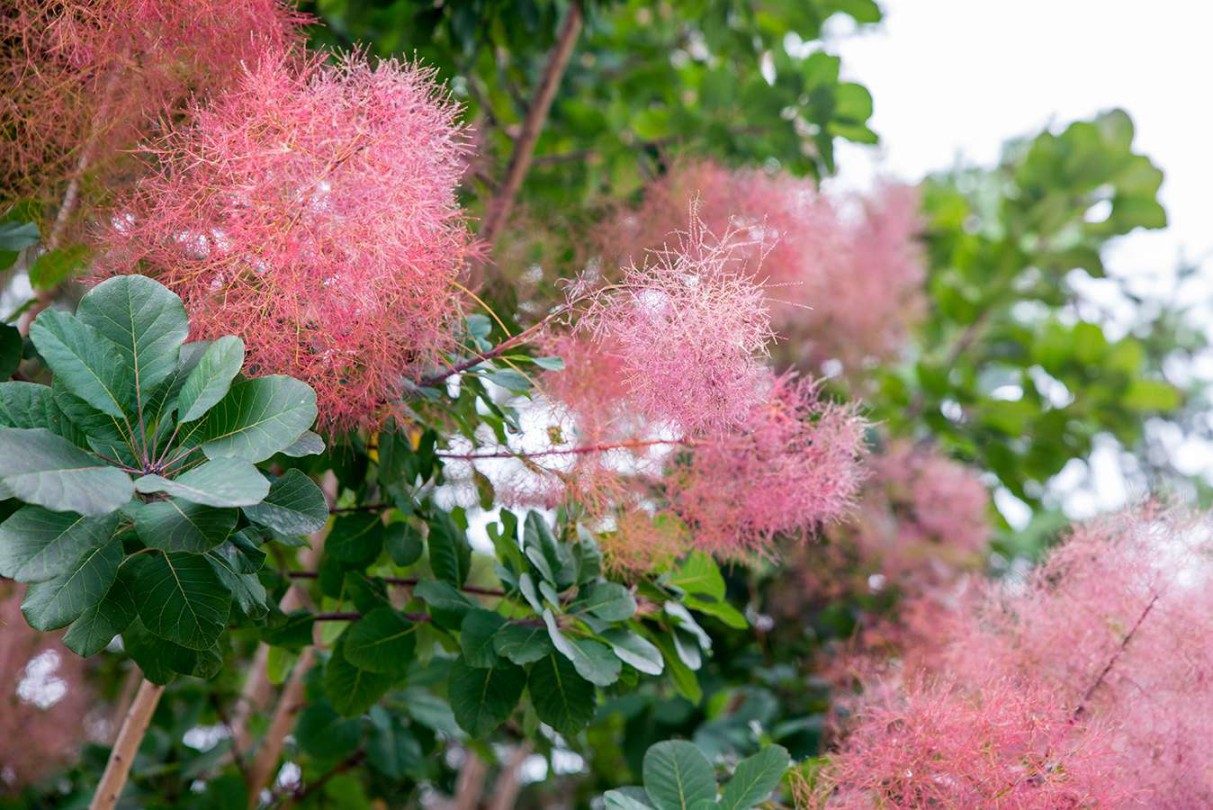
Image Source: thespruce.com
Everything You Need to Know About the Smoke Tree Plant
Introduction to Smoke Tree Plant
The Smoke Tree Plant, also known as Cotinus coggygria, is a visually striking deciduous shrub that is known for its unique appearance and vibrant foliage. This plant is popular among gardeners for its ornamental value and ability to thrive in a variety of climates.
Physical Characteristics of Smoke Tree Plant
The Smoke Tree Plant typically grows to a height of 10-15 feet and has a spread of 10-12 feet. It features oval-shaped leaves that turn a brilliant shade of red, orange, or purple in the fall. The plant also produces small, fluffy clusters of Flowers that resemble puffs of smoke, hence its name.
Growing Conditions for Smoke Tree Plant
Smoke Tree Plants are hardy in USDA zones 5-9 and prefer full sun to partial shade. They thrive in well-Drained soil and are drought-tolerant once established. These plants are relatively low-maintenance and do not require frequent watering or fertilizing.
Propagation of Smoke Tree Plant
Smoke Tree Plants can be propagated through seeds or cuttings. Seeds should be sown in the fall or spring, while cuttings can be taken in the summer. It is important to provide the plant with proper care and attention during the propagation process to ensure successful growth.
Pruning and Maintenance of Smoke Tree Plant
Pruning is essential for maintaining the shape and health of Smoke Tree Plants. It is best to prune the plant in late winter or early spring before new growth begins. Remove any dead or damaged branches to encourage new growth and improve overall appearance.
Common Pests and Diseases of Smoke Tree Plant
Smoke Tree Plants are generally resistant to pests and diseases, but they may occasionally be affected by aphids, scale insects, or powdery mildew. Regular inspection and proper care can help prevent infestations and maintain the plant’s health.
Uses of Smoke Tree Plant
In addition to its ornamental value, Smoke Tree Plants have various practical uses. The plant’s leaves can be used to make natural dyes, while its wood is often used for woodworking projects. Some cultures also use the plant for medicinal purposes.
Landscaping with Smoke Tree Plant
Smoke Tree Plants make a stunning addition to any landscape and are commonly used in garden borders, as a focal point in a mixed border, or as a standalone specimen plant. Their vibrant foliage and unique flowers add interest and color to any garden setting.
Benefits of Growing Smoke Tree Plant
Growing Smoke Tree Plants offers numerous benefits to gardeners. These plants are relatively low-maintenance, drought-tolerant, and resistant to pests and diseases. They also provide year-round interest with their colorful foliage and unique flowers.
Popular Varieties of Smoke Tree Plant
There are several popular varieties of Smoke Tree Plants, each with its own unique characteristics. Some of the most common varieties include ‘Royal Purple’, ‘Velvet Cloak’, and ‘Golden Spirit’. These varieties differ in foliage color, growth habit, and flower size.
Landscaping Ideas with Smoke Tree Plant
Smoke Tree Plants can be incorporated into a variety of landscaping designs to add color, texture, and interest to outdoor spaces. They work well as a backdrop for perennial Beds, as a focal point in a mixed border, or as a standalone specimen plant in a container garden.
Tips for Growing a Healthy Smoke Tree Plant
To ensure the health and vitality of your Smoke Tree Plant, it is important to provide proper care and maintenance. Water the plant regularly, especially during hot weather, and fertilize sparingly to avoid excessive growth. Pruning is also essential for maintaining the plant’s shape and health.
Common Problems with Smoke Tree Plant
Despite being relatively low-maintenance, Smoke Tree Plants may encounter some common problems. These include leaf sPot, root rot, and leaf scorch. Proper care, including regular watering, pruning, and monitoring for pests, can help prevent these issues.
How to Care for Smoke Tree Plant in Winter
Winter care is essential for ensuring the health and survival of Smoke Tree Plants. In colder climates, it is important to protect the plant from frost and freezing temperatures. Mulching around the base of the plant can help insulate the roots and protect them from winter damage.
Companion Plants for Smoke Tree Plant
When selecting companion plants for Smoke Tree Plants, it is important to consider factors such as soil type, Sunlight requirements, and water needs. Some suitable companion plants include lavender, Russian sage, and ornamental grasses. These plants complement the Smoke Tree Plant and create a harmonious garden design.
Benefits of Smoke Tree Plant in the Garden
The Smoke Tree Plant offers numerous benefits to gardeners, including its striking appearance, low-maintenance nature, and versatility in landscaping designs. Whether used as a focal point or as part of a mixed border, this plant adds beauty and interest to any garden setting.
FAQs About Smoke Tree Plant
1. Is the Smoke Tree Plant toxic to pets?
The Smoke Tree Plant is non-toxic to pets, making it a safe choice for pet owners who want to add a colorful shrub to their landscape.
2. Can Smoke Tree Plants tolerate extreme heat?
Smoke Tree Plants are heat-tolerant and can thrive in hot, sunny conditions. However, they may require additional watering during periods of extreme heat to prevent drought stress.
3. How often should Smoke Tree Plants be fertilized?
Smoke Tree Plants do not require frequent fertilizing and should only be fertilized sparingly, if at all. A light application of balanced fertilizer in the spring is usually sufficient to support healthy growth.
Conclusion
In conclusion, the Smoke Tree Plant is a versaTile and visually striking shrub that offers numerous benefits to gardeners. With its vibrant foliage, unique flowers, and low-maintenance nature, this plant is an ideal choice for adding color and interest to any garden setting. By following proper care and maintenance practices, you can enjoy the beauty of the Smoke Tree Plant year-round.
Smoke Tree Plant